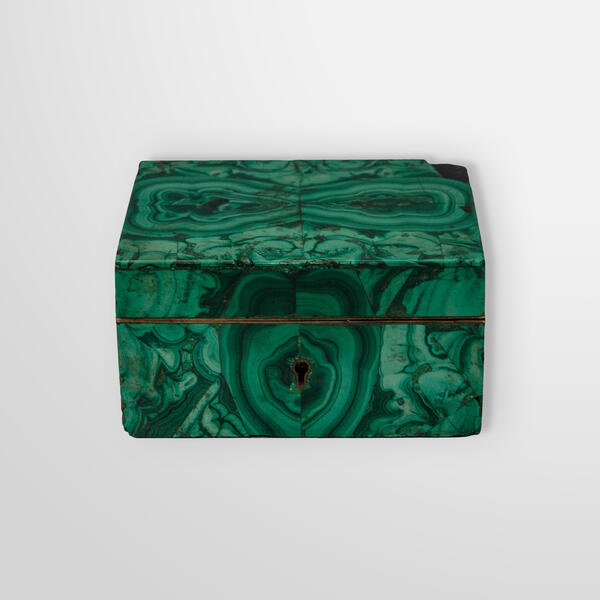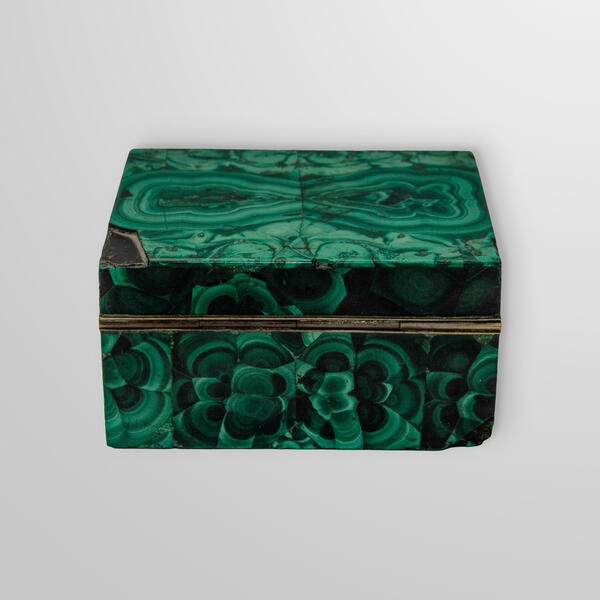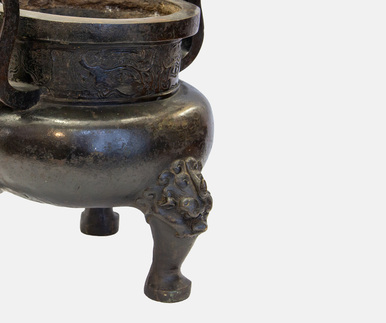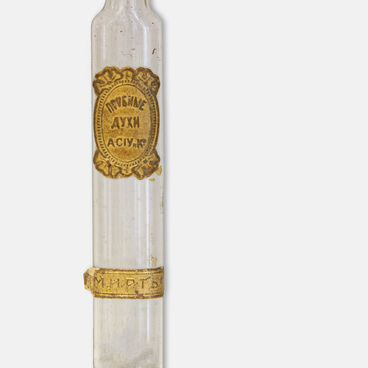The surface of the rectangular jewelry box is covered with malachite in the style of Russian mosaic. The inner surface of the jewelry box and hinged lid is lined with white cotton wool and upholstered in red satin with small round “buttons” sewn with threads. There is a brass frame on the inside of the upper perimeter; the box has a built-in lock, which can be opened with a small key.
Malachite jewelry boxes were a popular accessory of ladies’ boudoirs in the 19th century. They were usually used for storing imitation and real jewelry. To protect the inside of the box, it was upholstered with a soft cloth. The jewelry box has a simple rectangular shape, however the finish is made in a complex technique of Russian mosaic with a set for four sides. This technique requires one to saw off plates from 3 to 6 millimeters from a colored stone. The patterns on both slices of the plate are identical, therefore, sawing off another plate and combining it with the first gives a symmetrical pattern for two sides. By sawing off two more plates from the same stone and connecting them with the first two, one gets the same pattern on four sides. Compositions for six or more sides can be made in the same way. They can be combined into a variety of patterns and used to decorate all kinds of things.
This decorating technique is named Russian mosaic after the place where it was most widespread. In the 18th–19th centuries, the Russian Empire was the record holder for harvesting malachite which was most suited for this technique than any other mineral. However, the method itself is not new: in Italy during the Renaissance period, stone cutters used a technique of gluing thin plates onto a base made of wood, metal or other stone to make the surface of the things they were making appear seamless. Ural craftsmen perfected this technique and learned how to lay out whole ornaments made of stone.
The art of cutting stone emerged in the Urals in the 18th century. In 1720, Tsar Peter I appointed Vasily Tatishchev as the first chief of Ural and Siberian ironworks. Among various crafts that Tatishchev planned to establish in the future city of Yekaterinburg, there was stone-cutting and lapidary. Around this time, deposits of malachite were discovered. Currently, all its deposits have been drained, and stone cutters use minerals imported from other countries. The memory of this craft has been preserved in literature thanks to Pavel Petrovich Bazhov and his collection of fairy tales “The Malachite Box”.





